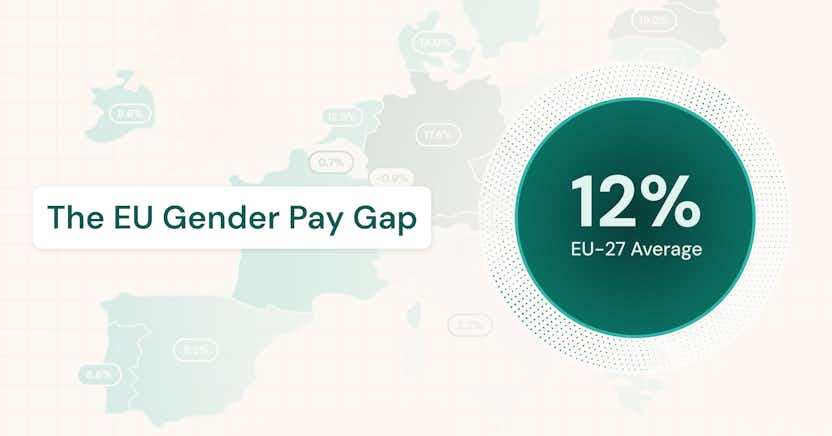What Is Compensation Management?
Compensation management is the structured process of designing, implementing, and optimizing pay structures to ensure employees are compensated fairly, competitively, and in alignment with business goals. It is a strategic function that balances internal equity, market competitiveness, compliance, and performance-based incentives.
A well-designed compensation strategy considers multiple components, including:
- Base salary administration – Establishing clear pay bands based on roles, industry benchmarks, and internal parity.
- Incentive programs – Structuring performance-driven short- and long-term incentives.
- Pay equity initiatives – Ensuring fairness across demographics such as gender, race, and tenure.
- Regulatory compliance and governance – Meeting legal requirements related to labor laws, tax obligations, and reporting.
- Total rewards strategy – Integrating salaries with benefits, career progression opportunities, and recognition programs.
Organizations that effectively manage compensation create a motivated, engaged workforce while maintaining financial sustainability and compliance with regulatory requirements.
Why is compensation management important?
Compensation plays a central role in attracting, retaining, and motivating employees. It directly affects job satisfaction, workforce engagement, and business performance. At the same time, compensation is often the largest expense in an organization, making effective management essential for financial sustainability.
Beyond just determining salaries, compensation management involves balancing fixed and variable pay, ensuring regulatory compliance, supporting workforce retention, and maintaining pay transparency. In a rapidly evolving labor landscape, where pay equity and transparency regulations are becoming stricter, organizations must take a strategic and structured approach to compensation planning.
When done well, compensation management:
- Ensures employees feel valued and fairly compensated, boosting engagement and retention.
- Helps organizations remain competitive by aligning pay structures with market trends.
- Strengthens financial planning, ensuring sustainable workforce costs.
- Supports compliance with local and global pay transparency laws.
Organizations that fail to manage compensation effectively risk talent loss, legal consequences, and financial inefficiencies.
What are the types of compensation that require management?
Compensation is generally classified into three categories: fixed compensation, variable compensation, and non-monetary rewards. Each serves a unique role in talent retention and motivation.
1. Fixed compensation (guaranteed pay)
Fixed compensation refers to stable earnings that employees receive regardless of performance. It includes:
- Base salary – The fundamental pay employees earn for fulfilling their job duties.
- Annual salary increases – Adjustments based on tenure, performance, or cost-of-living changes.
- Cost-of-living adjustments (COLA) – Compensation modifications tied to inflation.
- Allowances – Stipends for housing, transportation, meals, or other job-related expenses.
2. Variable compensation (performance-based pay)
Variable compensation is tied to individual, team, or company performance and is often used to incentivize productivity and align pay with results. It includes:
- Bonuses – Periodic payments linked to company, team, or individual achievements.
- Sales commissions – Compensation based on revenue generation, commonly used in sales roles.
- Short-term incentives (STIs) – Performance-driven incentives granted within a fiscal year.
- Long-term incentives (LTIs) – Stock options, performance shares, or deferred compensation that rewards sustained contributions.
3. Non-monetary compensation (total rewards approach)
Compensation is not just about direct pay—many organizations provide additional benefits that contribute to employee satisfaction and retention:
- Benefits – Health insurance, retirement plans, paid leave, and wellness programs.
- Recognition programs – Spot awards, public acknowledgments, and milestone-based rewards.
- Career development – Tuition assistance, mentorship programs, and leadership training.
A well-balanced total rewards approach that combines fixed, variable, and non-monetary compensation enhances employee engagement and aligns workforce motivation with business objectives.
Why does compensation need managing?
Organizations that lack a structured compensation management strategy may experience pay inconsistencies, compliance risks, and talent retention issues. Key reasons for proactive compensation management include:
- Ensuring market competitiveness – Keeping pay structures in line with industry benchmarks.
- Achieving internal pay equity – Maintaining fairness across roles, departments, and demographics.
- Driving employee engagement and performance – Aligning compensation with business results.
- Regulatory compliance – Avoiding risks related to labor laws and tax obligations.
- Budget control – Managing workforce costs efficiently while maximizing return on investment.
Without an effective compensation strategy, companies risk demotivating employees, increasing turnover, and facing legal repercussions due to non-compliance with pay regulations.
Who benefits from compensation management?
Compensation management has far-reaching effects on multiple stakeholders within an organization.
Employees
- Fair and transparent pay structures improve job satisfaction and reduce turnover.
- Performance-linked incentives encourage higher engagement and productivity.
- Pay equity fosters trust and a positive workplace culture.
Managers
- Simplifies the compensation review process, reducing administrative workload.
- Provides data-driven insights to support fair and consistent pay decisions.
- Ensures compensation structures are clearly communicated to employees.
HR and compensation teams
- Reduces manual effort through automation, allowing for more strategic work.
- Ensures pay policies remain compliant with evolving labor laws.
- Enhances decision-making through analytics and reporting tools.
Executives
- Supports long-term workforce planning and company growth.
- Aligns compensation with corporate strategy and financial goals.
- Helps attract and retain high-level leadership talent.
Shareholders and investors
- Maintains financial efficiency and cost control in workforce expenses.
- Ensures executive pay structures are aligned with shareholder interests.
- Enhances corporate governance and transparency.
What are common approaches to compensation management: pros and cons?
Organizations manage compensation in different ways, each with advantages and challenges.
1. Spreadsheets
- Pros: Low-cost, customizable.
- Cons: Prone to errors, lacks security, inefficient for large-scale operations.
- Best for: Small businesses with basic pay structures.
2. Homegrown systems
- Pros: Custom-built to meet specific business needs.
- Cons: High maintenance costs, requires IT support, lacks scalability.
- Best for: Companies with unique requirements and strong IT resources.
3. HR suite compensation modules
- Pros: Integrated with broader HR functions, basic automation.
- Cons: Limited flexibility for complex pay structures, requires workarounds.
- Best for: Organizations with simple, standardized compensation needs and limited geographical span.
4. Dedicated compensation management software
- Pros: Highly configurable, scalable, includes advanced analytics and compliance tools.
- Cons: Requires initial investment and integration.
- Best for: Enterprises with complex or global compensation needs.
The recommended approach for optimum compensation management is with a best in class, dedicated compensation management solution.
Frequently asked questions (FAQs) about compensation management
- What is compensation management, and why does it matter?
Compensation management is the process of structuring, executing, and refining employee pay policies. It ensures that salaries, incentives, and benefits align with market trends, internal equity, and business goals. - How does compensation management differ from payroll?
Compensation management is strategic and focuses on planning pay structures, while payroll is transactional and ensures employees are paid accurately and on time. - What are the biggest challenges in compensation management?
Organizations face challenges including regulatory compliance, pay equity, market competitiveness, and aligning pay with performance. - What are the benefits of using compensation management software?
Compensation management software automates compensation cycles, improves accuracy, ensures compliance, integrates with payroll, and provides real-time analytics. - How can companies improve their compensation strategy?
Best practices include benchmarking salaries, ensuring transparency, conducting equity audits, automating compensation processes, and aligning pay with business objectives.
Summary
A structured, data-driven approach to compensation management helps organizations attract, retain, and motivate employees while ensuring compliance and financial sustainability.






